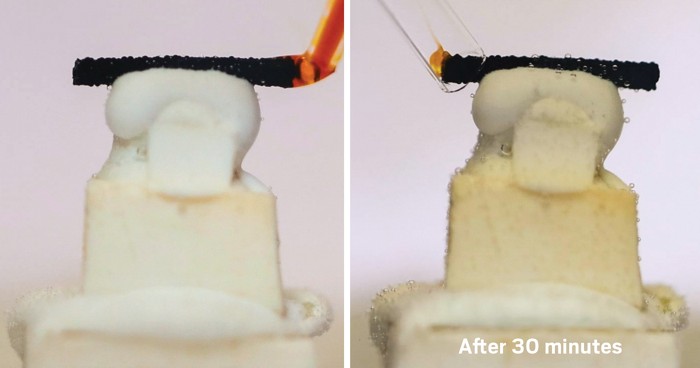Advertisement
Grab your lab coat. Let's get started
Welcome!
Welcome!
Create an account below to get 6 C&EN articles per month, receive newsletters and more - all free.
It seems this is your first time logging in online. Please enter the following information to continue.
As an ACS member you automatically get access to this site. All we need is few more details to create your reading experience.
Not you? Sign in with a different account.
Not you? Sign in with a different account.
ERROR 1
ERROR 1
ERROR 2
ERROR 2
ERROR 2
ERROR 2
ERROR 2
Password and Confirm password must match.
If you have an ACS member number, please enter it here so we can link this account to your membership. (optional)
ERROR 2
ACS values your privacy. By submitting your information, you are gaining access to C&EN and subscribing to our weekly newsletter. We use the information you provide to make your reading experience better, and we will never sell your data to third party members.
Separations
Chemistry In Pictures
Chemistry in Pictures: A spooky separation
by Manny Morone
October 29, 2019
In this eerie and (unintentionally) Halloween-themed edition of Chemistry in Pictures, Jon Grimm used a UV light, a time-lapse camera, and a silica column to purify a fluorescent dye that he helped develop at Howard Hughes Medical Institute’s Janelia Research Campus in the lab of Luke Lavis. One of the steps in synthesizing these dyes involves adding an amine (azetidine in this reaction, shown above) to the dye’s carbon scaffold using a palladium-catalyzed reaction. It’s the product of that reaction that Grimm was running through this silica column. The hallmark of the unusually bright so-called Janelia Fluor dyes is the straightforward pathway for changing the color that these molecules emit when they glow. By swapping out the azetidine for a different amine or swapping one of the oxygen atoms for a silicon, the color that the dyes fluoresce can be predictably fine-tuned, which makes the rainbow of Janelia Fluor dyes useful in complex imaging experiments in which many distinct fluorescent markers are needed.

Submitted by Jon Grimm. Follow Grimm on Instagram (@dyerfulchymist) and Twitter (@jonathangrimm).
Do science. Take pictures. Win money. Enter our photo contest here.
Related C&EN Content:



Join the conversation
Contact the reporter
Submit a Letter to the Editor for publication
Engage with us on Twitter